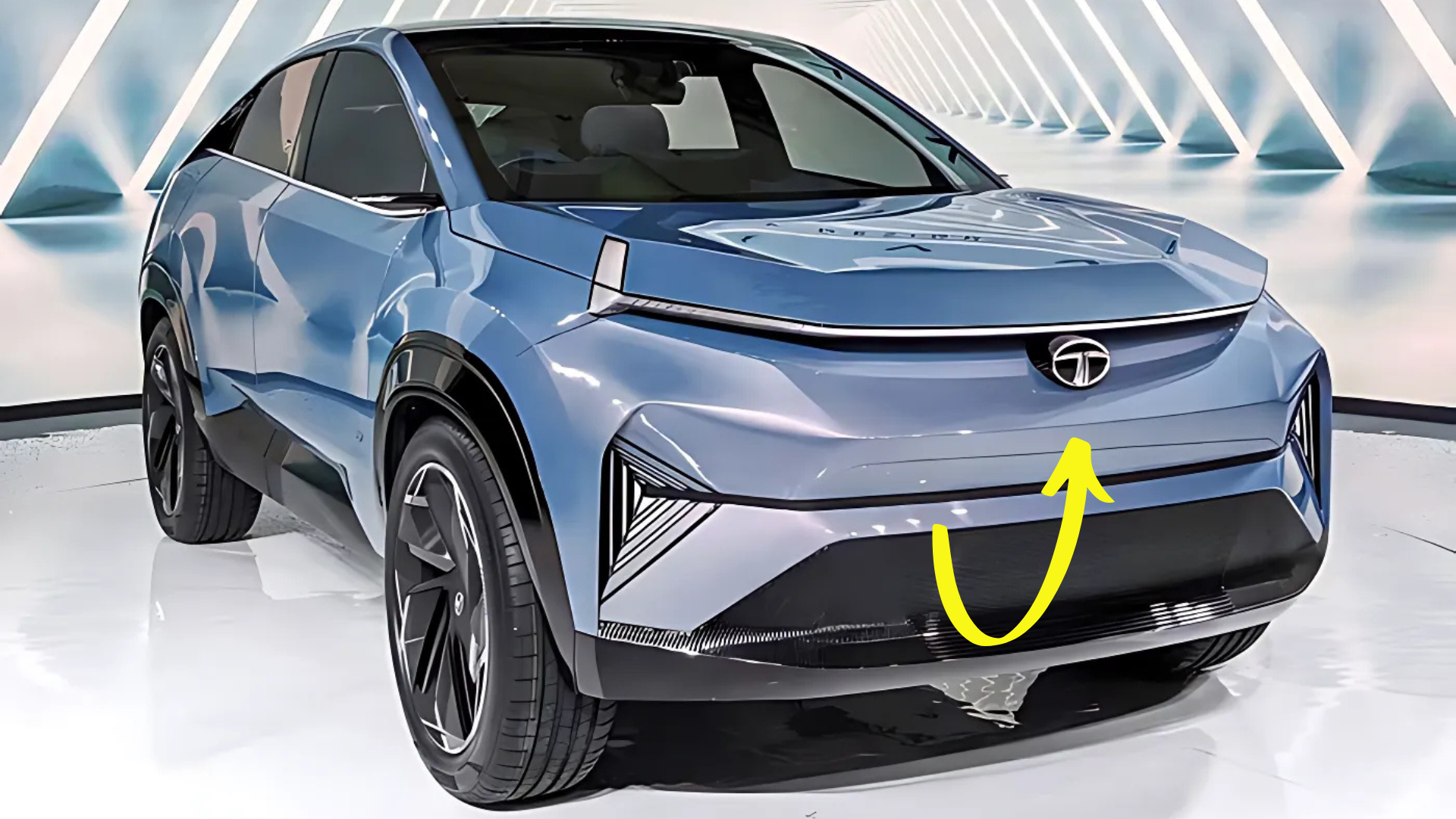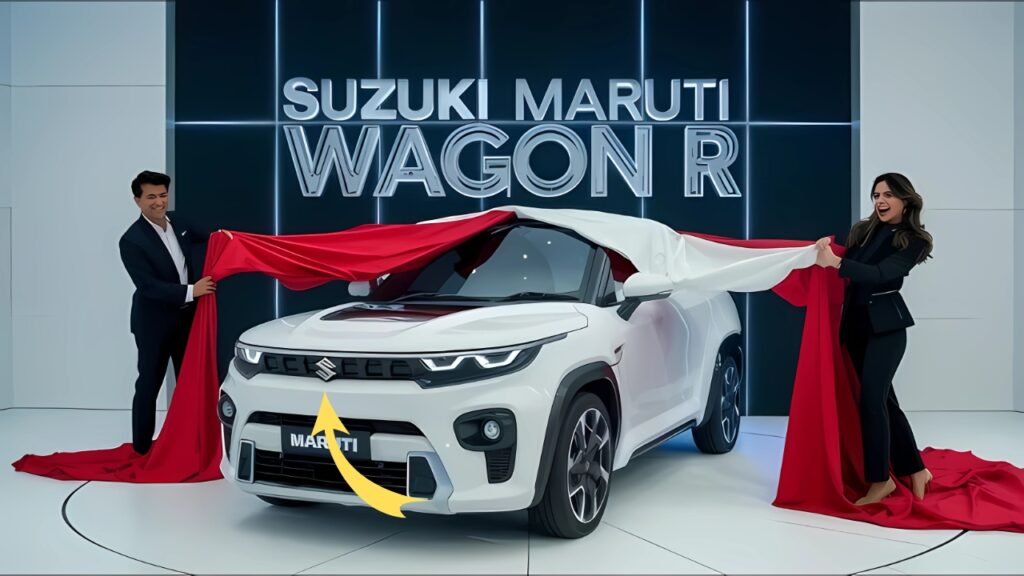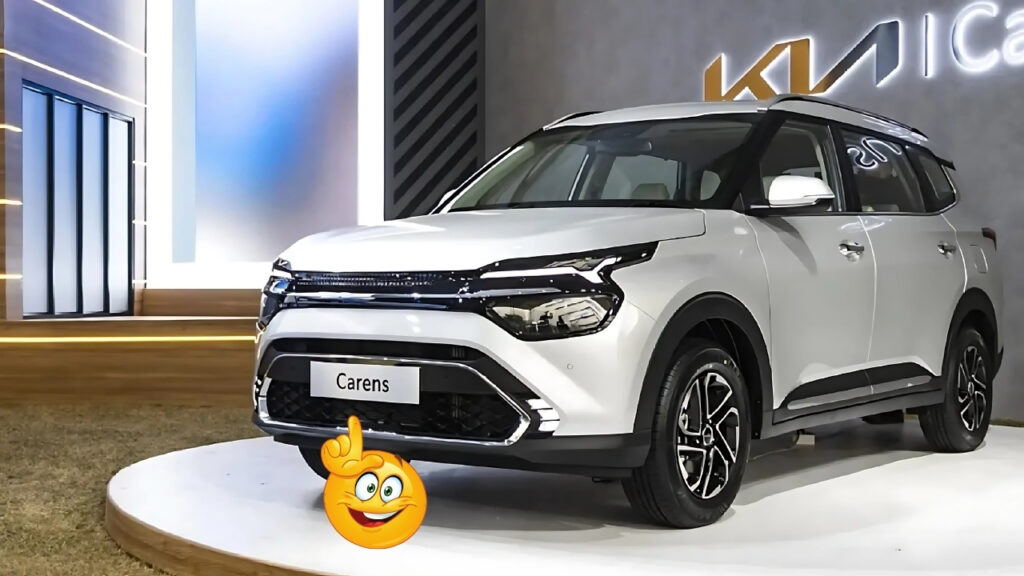In a bold statement that has sent ripples through the automotive industry, Tata Motors has expressed serious concerns about how hybrid vehicles might undermine India’s journey toward zero-carbon mobility. This stance comes at a critical juncture for the Indian automotive sector.
The warning from India’s indigenous automotive giant highlights the complex interplay between different propulsion technologies and their long-term environmental impact. It also underscores the strategic crossroads at which India currently finds itself.
Also Read: Yamaha Aerox 155 & 155cc engine with 40kmpl
Table of Contents
The Hybrid Controversy: Transitional Solution or Environmental Distraction?

Hybrid vehicles have long been positioned as a stepping stone in the evolution from internal combustion engines to fully electric mobility. They combine traditional combustion engines with electric motors to reduce emissions.
However, according to Tata Motors, this transitional technology now risks becoming more of a hindrance than a help. The company argues that hybrids might be slowing down rather than accelerating the transition to truly zero-emission vehicles.
Shailesh Chandra, Managing Director of Tata Motors Passenger Vehicles, has been particularly vocal on this issue. “Hybrids represent a technology that made sense a decade ago, but now risks diverting crucial resources and attention away from fully electric solutions,” he stated at a recent industry forum.
This position marks a significant deviation from the narrative that has dominated the industry for years. It challenges the conventional wisdom that hybrids are an essential bridge technology in the journey toward sustainable mobility.
The crux of Tata Motors’ argument lies in the economics of technological development. Resources directed toward perfecting hybrid technology, they contend, are resources not being invested in accelerating the electric revolution.
Furthermore, the company points out that hybrid vehicles still rely on fossil fuels. While they may use these fuels more efficiently, they do not eliminate carbon emissions, which is the ultimate goal of sustainable transportation.
India’s Unique Position in the Global Automotive Landscape
India presents a distinctive case in the global automotive ecosystem. As the world’s third-largest automotive market, decisions made here have far-reaching implications for global emission trajectories.
The country faces the dual challenge of reducing emissions while meeting the growing transportation needs of its vast population. This balancing act makes the choice between hybrid and fully electric vehicles particularly consequential.
Unlike more mature automotive markets, India is still in the early stages of mass motorization. This presents a unique opportunity to “leapfrog” directly to electric mobility without the intermediate hybrid stage.
Tata Motors, with its deep understanding of the Indian market, argues that this leapfrogging strategy is not just possible but preferable. The company believes India can avoid the “hybrid detour” that many Western nations have taken.
Population density and usage patterns in India also favor electric vehicles over hybrids. The predominantly short, urban journeys that characterize Indian driving habits are ideally suited to the range capabilities of modern electric vehicles.
Moreover, India’s warming climate makes the environmental imperative particularly acute. The country stands to be disproportionately affected by climate change, giving it added incentive to pursue the most ambitious decarbonization strategy possible.
Tata Motors’ Electric Vision and Investment Strategy
As India’s largest electric vehicle manufacturer, Tata Motors has backed its concerns with substantial action. The company has committed to one of the most ambitious electrification programs in the global automotive industry.
Their investment in electric vehicle technology exceeds $2 billion over the next five years. This figure represents a substantial portion of their overall R&D budget and underscores the seriousness of their commitment.
The Nexon EV, Tata’s flagship electric vehicle, has already captured a commanding share of India’s nascent electric vehicle market. Its success demonstrates that properly executed electric vehicles can gain consumer acceptance even in emerging markets.
Tata Motors’ electrification roadmap includes the introduction of at least ten new electric models by 2025. This aggressive timeline reflects both their confidence in electric technology and their determination to accelerate its adoption.
Beyond passenger vehicles, the company is also developing electric solutions for commercial transportation. Their electric buses already operate in several Indian cities, providing zero-emission public transport options.
The company’s vertically integrated approach includes investments in battery technology and charging infrastructure. This holistic strategy addresses the entire electric mobility ecosystem rather than just vehicle production.
Policy Implications and Government Response
Tata Motors’ stance has significant implications for India’s automotive policy framework. The company is advocating for a clearer, more decisive push toward full electrification rather than support for hybrid technologies.
The Indian government currently offers incentives for both hybrid and electric vehicles, though with greater benefits for the latter. This approach reflects a hedging strategy that Tata Motors believes may be diluting the impact of electrification efforts.
The FAME II scheme (Faster Adoption and Manufacturing of Electric Vehicles) represents India’s most substantial policy intervention in this space. Tata Motors has called for its extension and expansion with a sharper focus on fully electric vehicles.
Tax disparities between hybrids and electric vehicles represent another policy lever. Currently, electric vehicles attract a GST of 5%, while hybrids are taxed at 28% plus cess, a differential that Tata Motors argues should be maintained or even widened.
Infrastructure development presents another crucial policy dimension. The company has emphasized that government support for charging infrastructure would do more to advance zero-carbon mobility than subsidies for hybrid technology.
Regulatory frameworks governing emissions standards also play a key role. Tata Motors suggests that increasingly stringent standards should be calibrated to favor electric rather than hybrid solutions in the medium to long term.
Competitive Landscape and Industry Reactions
Not all automotive manufacturers share Tata Motors’ perspective on hybrids. Several major international players with significant investments in hybrid technology have contested this view.
Toyota, a global leader in hybrid technology with its pioneering Prius, has argued for a more technology-neutral approach. The Japanese manufacturer contends that hybrids remain relevant for many markets and use cases.
Maruti Suzuki, India’s largest automaker, has also positioned itself as a proponent of hybrid technology. The company has invested significantly in its “Strong Hybrid” system and sees it as an important part of its sustainability strategy.
Honda and Toyota have announced substantial investments in hybrid manufacturing facilities in India. These investments reflect their belief that hybrid technology will maintain its relevance in the Indian market for years to come.
Mahindra & Mahindra, one of Tata’s primary domestic competitors, has pursued a more balanced approach. While investing heavily in electric vehicles, they have not dismissed hybrids as emphatically as Tata Motors has.
These divergent perspectives highlight the strategic uncertainty that characterizes the industry at present. Different manufacturers are effectively placing different bets on the future of automotive technology.
Environmental Impact Assessment: Hybrids vs. Pure Electric
At the heart of this controversy lies the question of actual environmental impact. Tata Motors bases its position on lifecycle analyses that compare the carbon footprint of hybrid versus fully electric vehicles.
The company points to research indicating that while hybrids offer a 30-40% reduction in emissions compared to conventional vehicles, electric vehicles can achieve reductions of up to 70-80% even with India’s current electricity mix.
As India’s electricity grid continues to incorporate more renewable energy, this advantage will become even more pronounced. By 2030, electric vehicles could offer near-total decarbonization of road transport in India.
The following table presents a comparison of lifetime emissions across different vehicle types, based on data cited by Tata Motors:
| Vehicle Type | Production Emissions (tCO₂e) | Operation Emissions (tCO₂e) | Total Lifecycle Emissions (tCO₂e) | Emission Reduction vs. ICE |
|---|---|---|---|---|
| Conventional ICE | 5.6 | 33.4 | 39.0 | – |
| Mild Hybrid | 6.0 | 26.7 | 32.7 | 16% |
| Strong Hybrid | 6.4 | 19.7 | 26.1 | 33% |
| Plug-in Hybrid | 7.1 | 13.5 | 20.6 | 47% |
| Battery Electric | 8.8 | 4.3 | 13.1 | 66% |
| Battery Electric (2030 Grid) | 8.8 | 2.1 | 10.9 | 72% |
These figures support Tata Motors’ contention that the environmental benefits of fully electric vehicles substantially outweigh those of even the most advanced hybrid systems.
The company also emphasizes that hybrid vehicles do nothing to address local air pollution in India’s congested urban centers. Electric vehicles, by contrast, produce zero tailpipe emissions, offering immediate air quality benefits.
Infrastructure Challenges and Solutions
One of the strongest arguments in favor of hybrid technology is the lack of comprehensive charging infrastructure in India. Hybrids, with their self-charging capability, do not rely on external charging networks.
Tata Motors acknowledges this challenge but argues that it represents an opportunity for coordinated investment rather than a reason to delay electrification. The company has embarked on an ambitious charging network deployment in partnership with other stakeholders.
The Tata Power collaboration has already resulted in the installation of over 1,000 public charging points across India. This network continues to expand rapidly, with plans to reach 10,000 charging points by 2025.
Home charging solutions represent another focus area. Tata Motors points out that for many Indian consumers, home charging can meet 80-90% of their needs, reducing the immediate pressure on public charging infrastructure.
Innovative approaches to battery technology may also help address infrastructure limitations. Battery swapping, fast-charging capabilities, and improved energy density are all being pursued to make electric vehicles more convenient.
The company suggests that the infrastructure challenge is temporary while the climate crisis is permanent. In their view, this makes overcoming infrastructure barriers a more logical approach than settling for the partial solution that hybrids represent.
Economic Implications for Indian Automotive Industry
Beyond environmental considerations, Tata Motors’ position reflects an assessment of the economic future of India’s automotive sector. The company believes that leapfrogging to electric vehicles presents a strategic advantage.
India has historically been a net importer of automotive technology. Electric vehicles offer an opportunity to develop indigenous expertise and reduce dependence on foreign intellectual property.
Battery production represents a particularly significant economic opportunity. Tata Motors points to estimates suggesting that domestic battery manufacturing could create up to 50,000 direct jobs and contribute $300 billion to India’s GDP by 2030.
The export potential of Indian-made electric vehicles also factors into this economic calculus. As global markets increasingly favor zero-emission vehicles, India could position itself as a manufacturing hub for affordable electric mobility.
Component manufacturing for electric vehicles could revitalize India’s automotive supply chain. With fewer moving parts than conventional vehicles, electric vehicles require different supplier capabilities, creating opportunities for new entrants.
Tata Motors argues that focusing on hybrid technology would mean investing in a sunset industry. In contrast, building expertise in electric mobility represents an investment in future growth sectors.
Consumer Perspectives and Market Readiness
Consumer acceptance ultimately determines the success of any automotive technology. Tata Motors’ stance reflects their assessment that Indian consumers are more ready for electric vehicles than is commonly assumed.
Sales data from Tata’s own electric lineup supports this view. The Nexon EV has consistently outperformed market expectations, suggesting untapped demand for electric vehicles when properly executed and priced.
Range anxiety, often cited as a major barrier to electric vehicle adoption, may be less relevant in the Indian context. The average daily driving distance in India is under 50 kilometers, well within the range of even basic electric vehicles.
Cost considerations remain paramount for Indian consumers. Tata Motors argues that while electric vehicles currently carry a price premium, the total cost of ownership already favors electric options for many use cases.
The following table compares ownership costs across different vehicle types over a five-year period:
| Cost Component | Conventional ICE | Strong Hybrid | Battery Electric |
|---|---|---|---|
| Purchase Price | ₹8,00,000 | ₹12,00,000 | ₹14,00,000 |
| Fuel/Electricity | ₹4,50,000 | ₹2,70,000 | ₹75,000 |
| Maintenance | ₹1,20,000 | ₹1,00,000 | ₹60,000 |
| Insurance | ₹75,000 | ₹1,05,000 | ₹1,20,000 |
| Tax Benefits | ₹0 | ₹0 | -₹1,50,000 |
| Resale Value | -₹3,20,000 | -₹4,80,000 | -₹5,60,000 |
| Total 5-Year Cost | ₹11,25,000 | ₹11,95,000 | ₹9,45,000 |
These figures suggest that even with current technology and pricing, electric vehicles can offer economic advantages over both conventional and hybrid vehicles when all costs are considered.
Global Context and International Parallels
Tata Motors’ position does not exist in isolation but reflects broader global trends. Several countries with advanced automotive sectors have already begun to pivot away from hybrid technology toward full electrification.
Norway’s experience offers a particularly instructive case study. The Nordic country initially supported both hybrid and electric vehicles but has progressively shifted incentives toward the latter as electric technology has matured.
The European Union’s increasingly stringent emissions regulations effectively favor electric over hybrid vehicles. The target of reducing fleet emissions by 55% by 2030 will be extremely difficult to achieve with hybrid technology alone.
China, the world’s largest automotive market, has also shifted its focus decisively toward electric vehicles. Chinese policies now strongly favor battery electric vehicles over hybrids, an approach that has accelerated its electric transition.
The United Kingdom and France have announced bans on the sale of new petrol and diesel vehicles by 2030, with hybrids receiving only a temporary reprieve until 2035. This regulatory trajectory signals the limited future of hybrid technology.
Tata Motors argues that India should learn from these international examples rather than repeating the same technological evolution. The company believes that following a hybrid-focused pathway would ultimately delay India’s transition to zero-emission mobility.
Future Scenarios and Strategic Recommendations
Looking forward, Tata Motors envisions several possible futures for India’s automotive sector, with dramatically different environmental outcomes depending on the technology path chosen.
Under a hybrid-focused scenario, the company projects that India’s automotive emissions would decrease by approximately 35% by 2040. This represents a significant improvement but falls far short of climate neutrality.
In contrast, an aggressive electric vehicle adoption scenario could reduce automotive emissions by up to 90% by 2040. This projection assumes continued decarbonization of India’s electricity grid alongside electric vehicle adoption.
To achieve the more ambitious scenario, Tata Motors recommends a comprehensive policy approach that includes:
- Targeted incentives that favor electric over hybrid vehicles
- Accelerated deployment of charging infrastructure
- Support for domestic battery manufacturing
- Progressively tightening emissions standards
- Public education campaigns highlighting the benefits of electric mobility
The company also suggests that India’s unique position as a rapidly growing automotive market provides leverage to influence global technology development. By clearly signaling a preference for electric vehicles, India could help accelerate global investment in this technology.
Balancing Pragmatism and Ambition
While Tata Motors’ position might appear absolutist, the company acknowledges that the transition to electric mobility must be managed pragmatically. Certain vehicle segments and use cases may continue to benefit from hybrid technology in the medium term.
Long-haul transportation, particularly in regions with limited charging infrastructure, represents one such case. Here, hybrid technology may continue to play a role until battery technology or charging infrastructure reaches sufficient maturity.
Rural areas present another context where hybrid vehicles might retain relevance longer than in urban centers. The company recognizes that charging infrastructure will develop unevenly, with urban areas likely to see faster deployment.
However, even while acknowledging these nuances, Tata Motors maintains that policy and investment should be oriented decisively toward electric rather than hybrid technology. They argue that exceptions should not determine the overall direction of travel.
The key, according to Tata Motors, lies in maintaining clarity about the ultimate destination: zero-carbon mobility. Hybrid technology, in their view, should be seen as a temporary accommodation rather than a destination in itself.
Frequently Asked Questions
Why is Tata Motors concerned about hybrid vehicles? Tata Motors believes hybrids divert resources from fully electric vehicles while providing only partial environmental benefits, potentially delaying India’s transition to zero-carbon mobility.
Aren’t hybrid vehicles better than conventional petrol/diesel vehicles?
Yes, hybrids offer 30-40% emission reductions compared to conventional vehicles, but electric vehicles can reduce emissions by 66-72%, making them significantly more effective for climate goals.
Is India’s electric grid clean enough to make electric vehicles worthwhile?
Even with India’s current electricity mix, electric vehicles produce substantially lower emissions than hybrids, and this advantage will increase as the grid incorporates more renewable energy.
Doesn’t India lack the charging infrastructure for electric vehicles?
While charging infrastructure is still developing, home charging can meet most needs for personal vehicles, and Tata is rapidly expanding public charging networks with over 10,000 points planned by 2025.
Are electric vehicles affordable for Indian consumers?
Initial purchase prices are higher, but lower operating costs mean electric vehicles often have lower total ownership costs over five years compared to both conventional and hybrid vehicles.
Which vehicle segments are most suitable for immediate electrification?
Urban personal transportation and fleet vehicles with predictable routes are most suitable for immediate electrification, while long-distance transportation may take longer to transition.
How does Tata Motors’ position compare to other Indian manufacturers?
Tata has taken the strongest position against hybrids, while competitors like Maruti Suzuki and Toyota continue to invest significantly in hybrid technology.
What policy changes is Tata Motors advocating?
Tata supports extending and expanding the FAME II scheme with a sharper focus on fully electric vehicles, maintaining tax differentials favoring electric over hybrid vehicles, and government support for charging infrastructure.
Will hybrid vehicles become obsolete?
Tata Motors believes hybrids will gradually become obsolete as battery technology improves and charging infrastructure expands, though the timeline may vary by region and use case.
What are the economic benefits of focusing on electric rather than hybrid vehicles?
Focusing on electric vehicles could create more domestic manufacturing opportunities, particularly in battery production, potentially creating 50,000 direct jobs and contributing $300 billion to India’s GDP by 2030.





